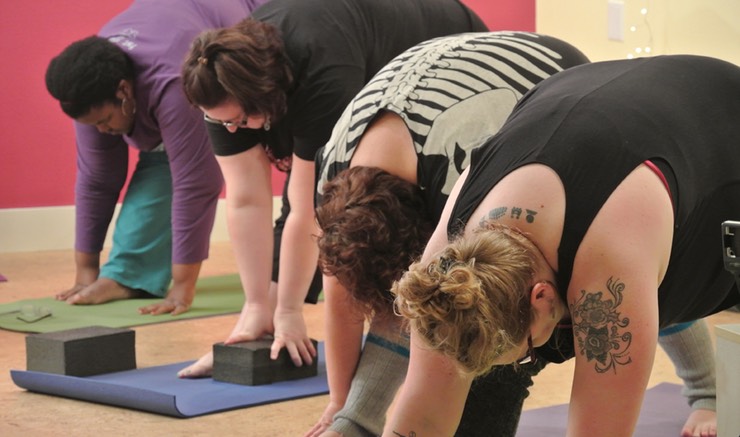
Share On Social!
Eat right and exercise.
You’ve probably heard this health message a thousand times.
But there’s a growing case for health professionals to ditch the word “exercise,” as it actually may hinder Latinas from getting the disease-preventing physical activity they need.
Why? Read on.
Latina Physical Activity & Inactivity
Physical activity, like walking, dancing, gardening, and playing with kids can improve blood glucose control and prevent or delay the onset of type 2 diabetes.
New federal physical activity guidelines just came out confirming the health benefits of physical activity.
However, Latinos are less likely than other groups to meet these recommendations, and physical inactivity is one reason Latinas have the highest lifetime risk for diabetes across all demographic groups.
Time, childcare, cost and transportation are often cited as barriers to physical activity for Latino and all adults, including Latina women. However, researchers often use the terms “exercise” and “physical activity” interchangeably without clarifying what activities actually count for health.
New Study on Perceived Barriers
Researchers at the Fair Haven Community Health Center in New Haven, Conn., for example, surveyed 160 low-income Latinas about their perceived barriers to physical activity and used the term “exercise” interchangeably.
Lack of willpower and lack of energy were the most commonly perceived barriers.
 Fear of injury is also a barrier among this sample.
Fear of injury is also a barrier among this sample.
Latina study participants agreed with statements like: “I’m embarrassed about how I will look when I exercise with others,” and “I’m afraid I might injury myself or have a heart attack.”
Differences also emerged within the group:
- Older women were more likely than younger women to perceive fear of injury as a barrier;
- Overweight/obese women were more likely than women of normal weight to perceive social influence and lack of skill as barriers;
- Unemployed women were more likely than women who were employed to perceive fear of injury as an important barrier;
- Women who were not born in the continental United States were more likely than women born in the United States to perceive lack of time as an important barrier; and
- Women whose preferred language was Spanish were more likely than women whose preferred language was English to perceive lack of time, social influence, and lack of skill as barriers.
Latina women at risk for type 2 diabetes experience many of the same barriers related to lack of willpower and lack of energy that adults with type 2 diabetes experience.
“Although all women at risk for type 2 diabetes could benefit from counseling and other strategies to encourage physical activity, these efforts should be targeted toward Spanish-speaking overweight/obese women, who are more likely to perceive barriers to exercise,” researchers state.
Researchers conclude that promoting self-efficacy and focusing on factors that motivate rather than impede physical activity may help Latina women overcome these barriers.
Promoting self-efficacy, which is one’s belief or confidence in their ability to exert control over their own motivation, behavior and environment, and focusing on factors that motivate, both begin with a clear understanding of physical activity.
Two things physical activity isn’t: exercise and weight loss.
Physical Activity vs. Exercise

There is an important distinction between physical activity and exercise.
Physical activity is any bodily movement that increases energy expenditure above a resting level. This includes daily activities, like getting dressed, helping the kids get dressed, doing dishes, pacing while talking on phone, and grocery shopping.
Exercise is planned, structured, repetitive and performed with the goal of improving fitness.
Exercise is for those who have fitness goals, like running faster, jumping higher and lifting heavier.
These goals are separate from health.
It’s not surprising that people who don’t have a goal to run faster don’t have the willpower or energy to run.
According to the Physical Activity Guidelines for Americans, 2nd Edition, adults should do at least 150 minutes per week of moderate-intensity aerobic activity, with at least two days a week of muscle-strengthening activity.
Examples of moderate-intensity activities include walking, biking, swimming, ballroom or line dancing, gardening, house work, golf, doubles tennis, yoga, and water aerobics.

The fitness industry has jumbled exercise and health together, and health professionals got caught up in it, distributing health messages that promote exercise with intimidating images of super fit people doing athletic feats.
Research does not support 60-minute bouts at the gym.
People don’t have to run faster, jump higher or lift heavier to improve their health.
Any activity is better than being sedentary and it all adds up. Five minutes here and five minutes there add up for health.
Physical Activity vs. Weight Loss
Additionally, there is an important distinction between physical activity and weight loss.
 Regardless of weight status, physical activity reduces risk for disease and improves health.
Regardless of weight status, physical activity reduces risk for disease and improves health.
Even when weight loss goals are not achieved, increased physical activity reduces diabetes risk.
However, according to the Connecticut study, survey respondents don’t seem to understand the distinction between physical activity and exercise.
Survey respondents said things like “I am embarrassed about how I will look when I exercise with others,” and “My free times during the day are too short to include exercise.”
What if they knew that they don’t have to “exercise with others” to stay healthy?
What if they knew that each minute of physical activity throughout the day counts for health?
Moreover, the exercise culture is not an inclusive one. Women, low-income populations and communities of color have historically been excluded from sports, pools, and health clubs.
Everyone deserves to be AND feel their healthiest; thus, it is crucial to clarify misperceptions about what does and doesn’t count for health.
It’s also crucial to ensure everyone have safe places to walk, bike and play.
We at Salud America! challenge everyone to shift their language and make the distinction between physical activity and exercise, particularly for populations at higher risk for diabetes, like low-income Latina women.
By The Numbers
142
Percent
Expected rise in Latino cancer cases in coming years



